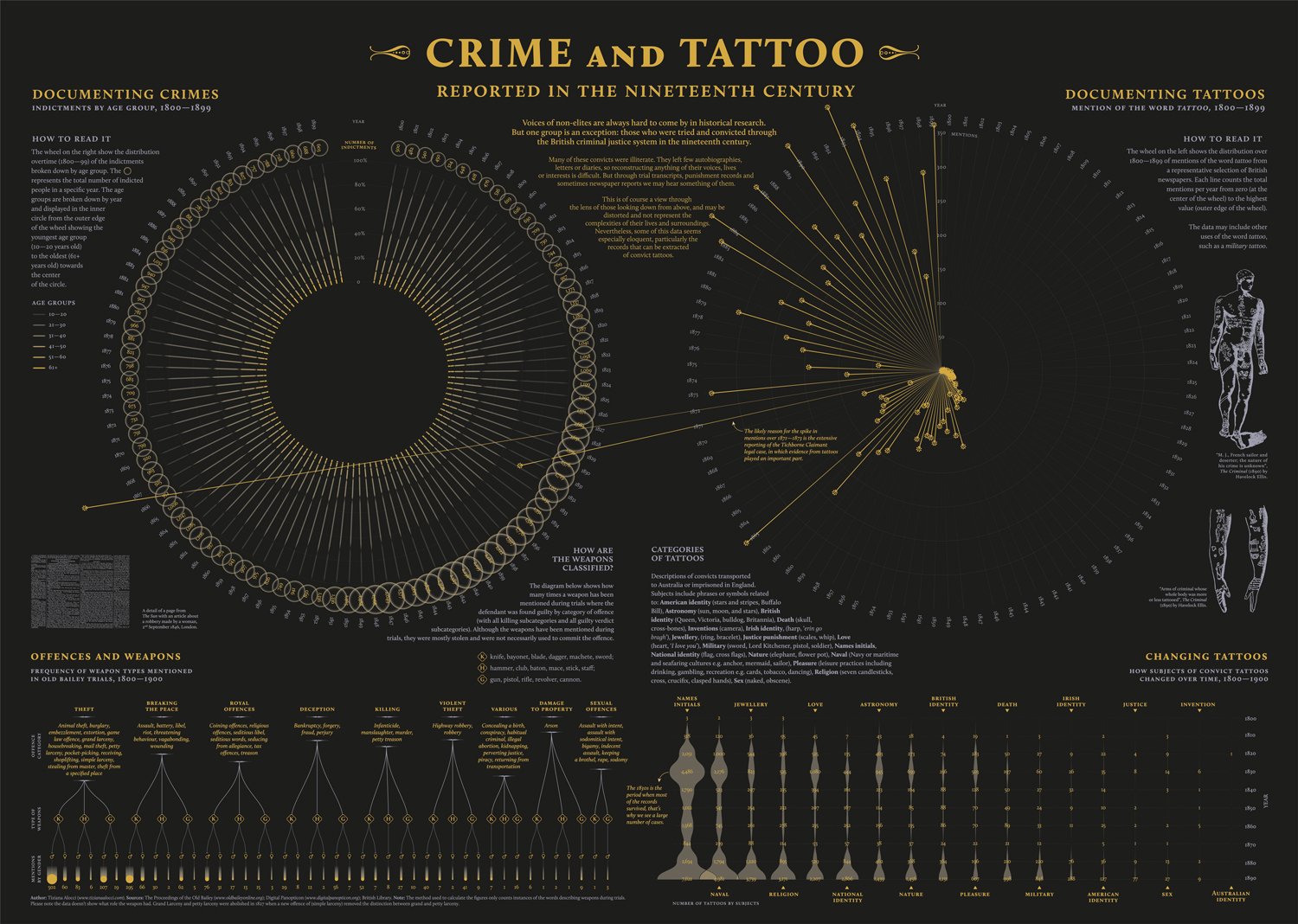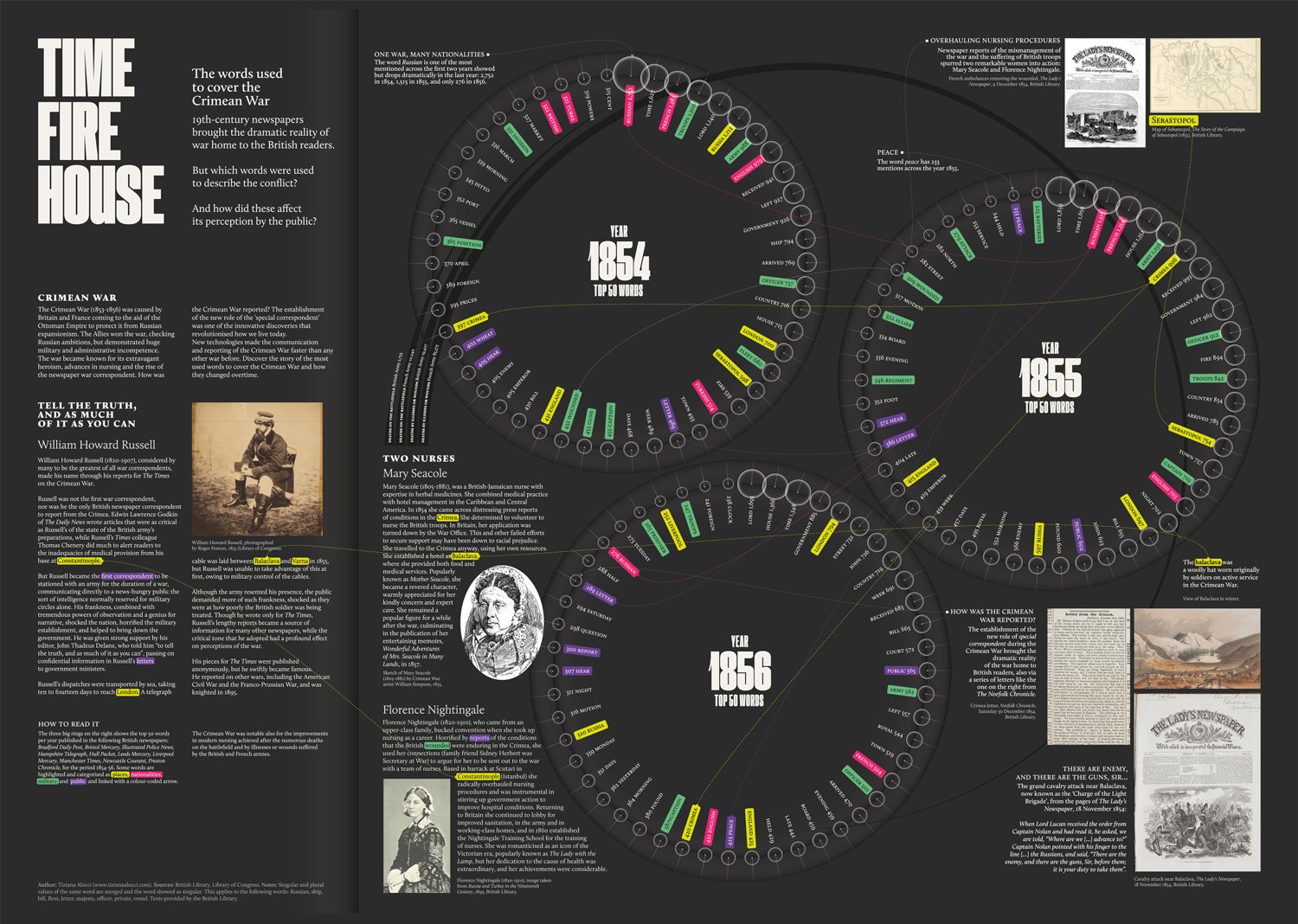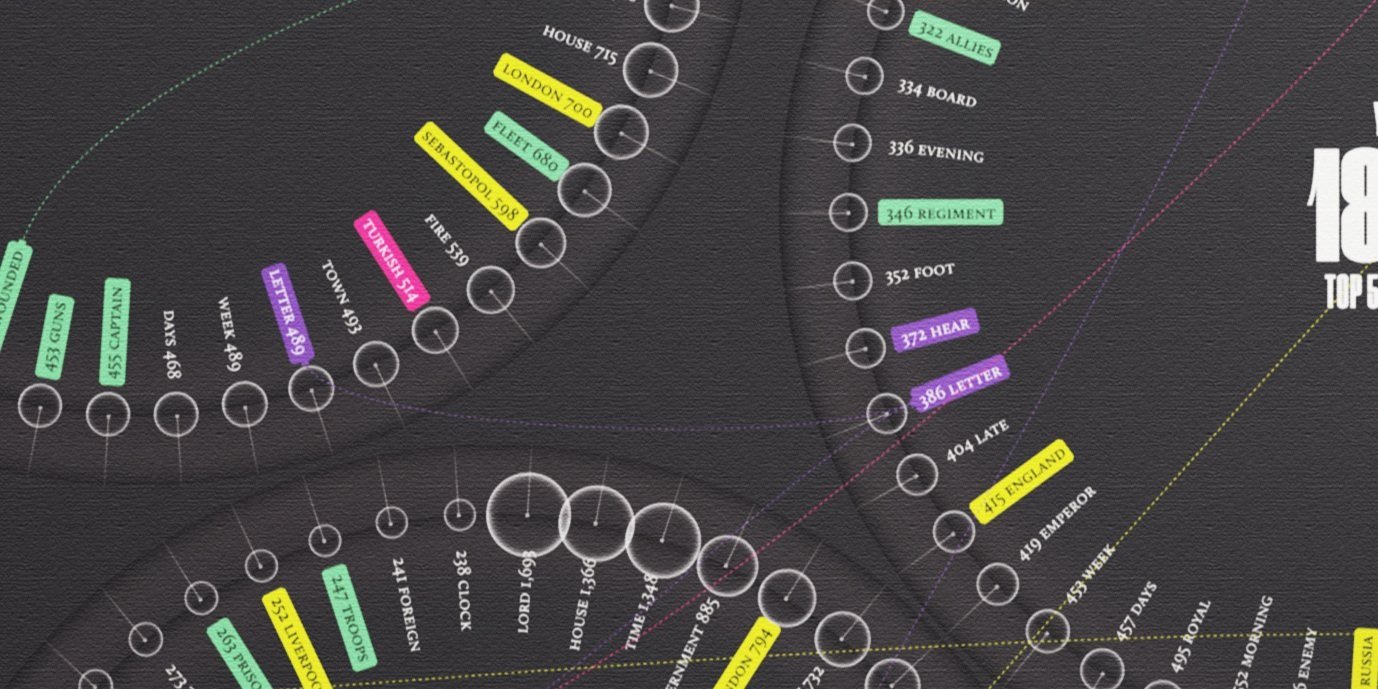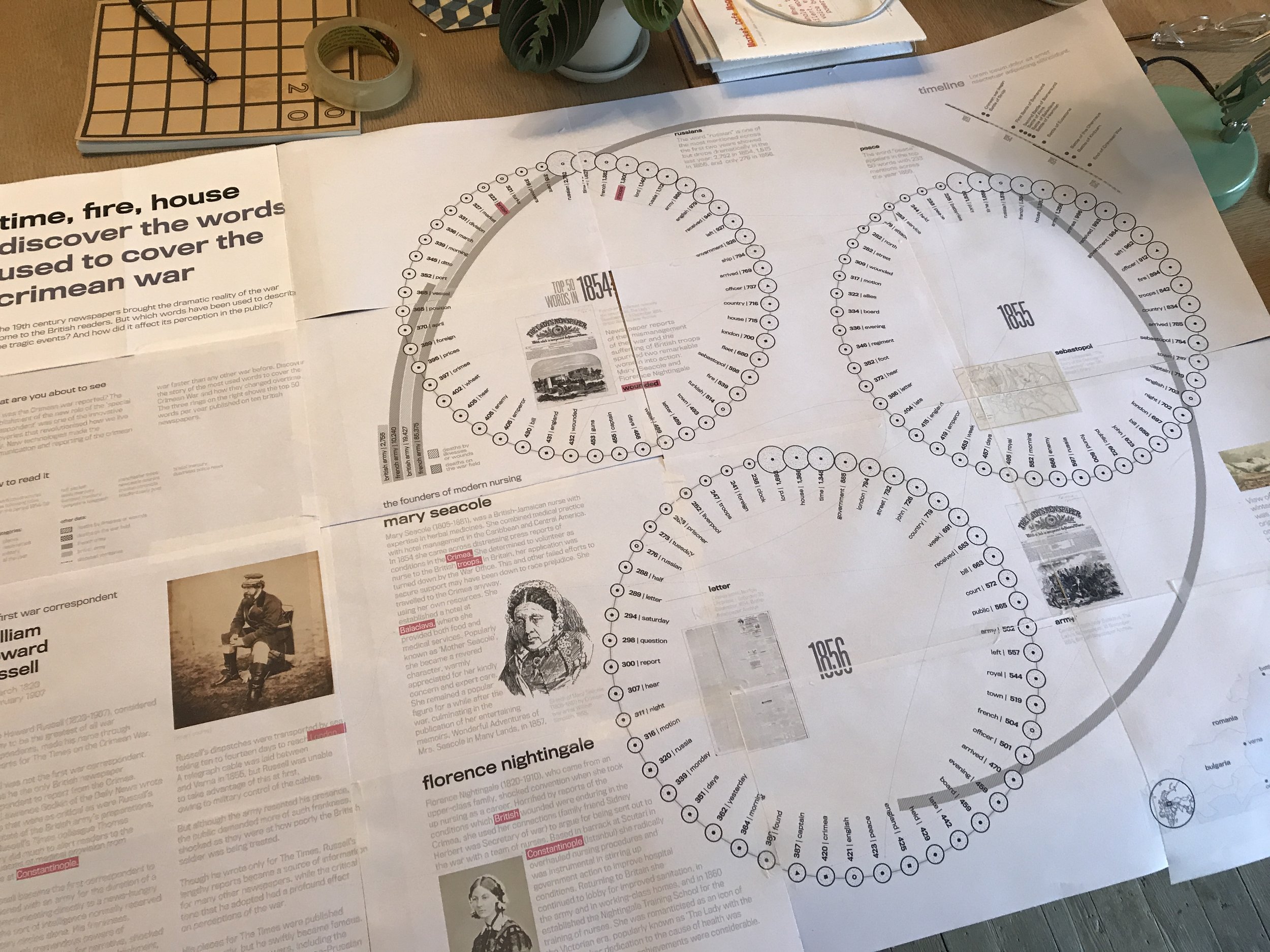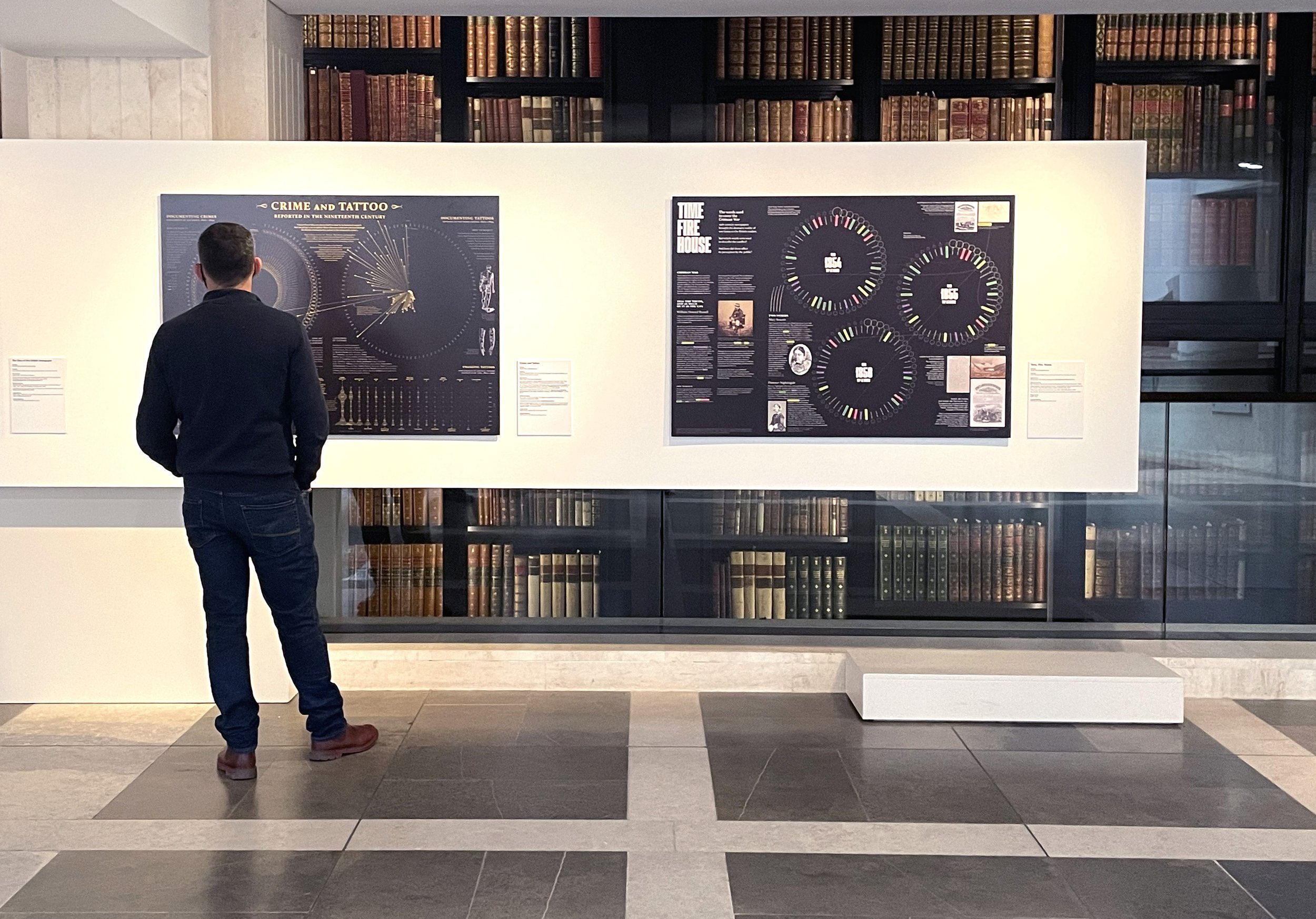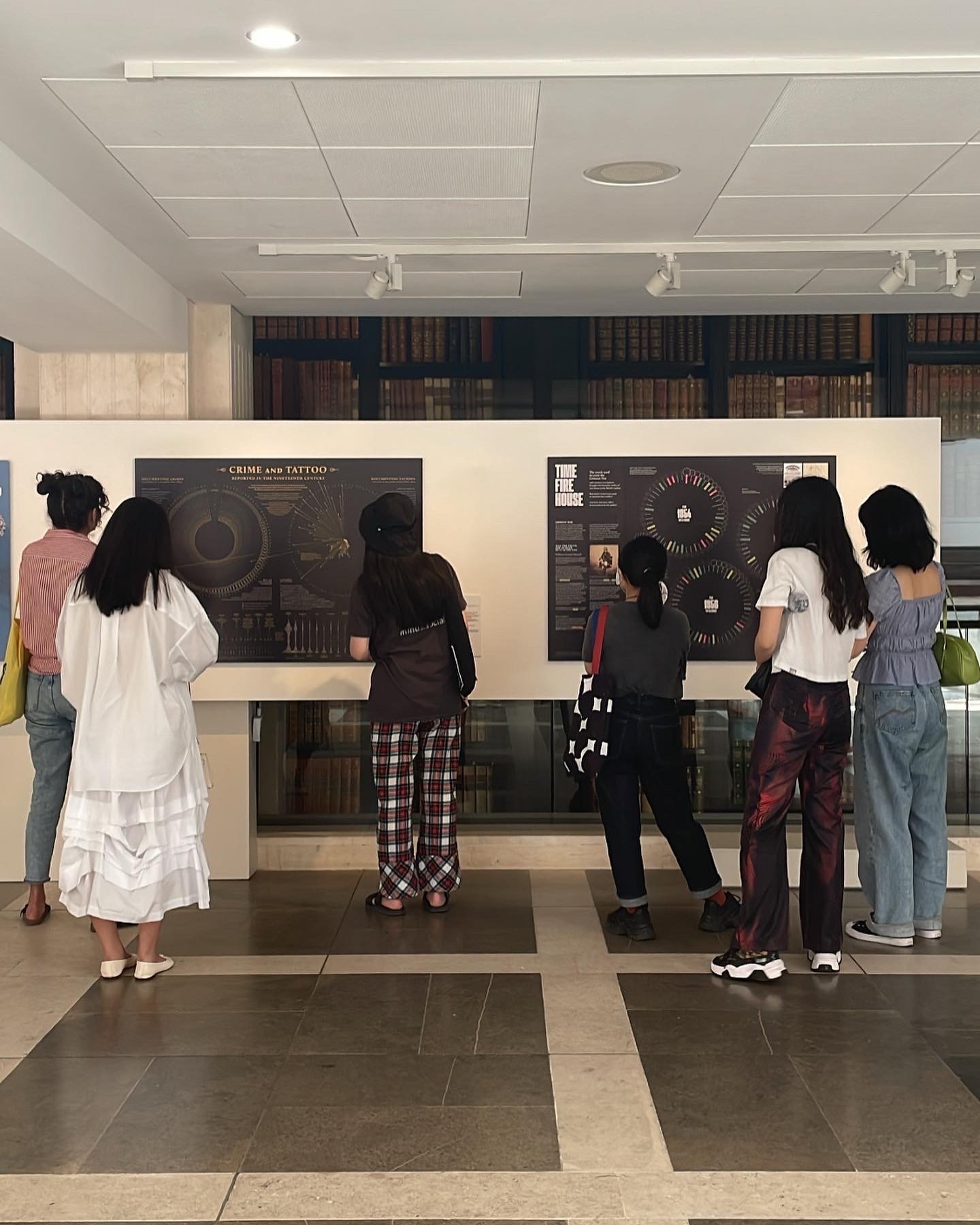The British Library – Visualising Victorian News
In 2019, I was asked by The British Library to create two artworks for an upcoming exhibition called "Visualising Victorian News." Despite the challenges posed by the pandemic, my pieces were finally displayed as part of the exhibition at the British Library until August 21, 2022.
The exhibition uses data from digitised British Library newspapers to explore themes from 19th-century news and reimagine aspects of British 19th-century history. I developed two pieces: Crime & Tattoo, which delves into the fascinating world of convict tattoos, and Time, Fire, House, which examines the language used to describe the Crimean War.
Below, you can read more about the creative process behind each piece.
Available to purchase as a limited edition Giclée print on Ilford Textured Cotton Rag 310gsm, signed and numbered. Please visit the online store.
Visualising crime records
Crime and Tattoo
The initial piece focused on reconstructing the lives of criminals based on their tattoos. Uncovering marginalised individuals' voices in historical research can be challenging. Still, there is one group for which we have a wealth of data: those who were convicted through the criminal justice system in the 1800s. The objective was to unite two distinct realms - crime and tattoos - into a cohesive narrative and artwork.
Available as a signed and numbered, limited-edition print, please visit the shop.
Tiziana Alocci, ‘Crime and Tattoo’, 2019; Courtesy of British Library.
Inspiration
As my reference, I relied primarily on celestial maps, specifically John Seller's 1675 Map of the two hemispheres of the heavens. To organise the artwork, I divided it into two parts: on the left, I showcased crime stories, and on the right, I displayed tattoos.
During the nineteenth century, tattoos were associated with brutality and crime. To support my work, I utilised data from The Digital Panopticon project, which consists of an extensive collection of records documenting convictions and punishments. Researchers conducted the largest tattoo analysis to date, examining approximately 76,000 descriptions of tattoos on almost 58,000 convicts in Britain and Australia.
A collection of vintage celestial maps. On the bottom right corner: John Seller, ‘Map of the two hemispheres of the heavens’, 1675.
Words used to cover the Crimean War
Time, Fire, House
The second section discusses the visualisation of the words used to cover the Crimean War, which brought the war to British readers in more detail than ever via 19th-century newspapers. The terms played an essential role in establishing the new role of the special correspondent during the war. Although early reports contained rich and detailed narratives, it would often take weeks before reliable information arrived back in Britain. These circumstances prompted this focus on the concept of time.
Available as a signed and numbered, limited-edition print, please visit the shop.
Tiziana Alocci, ‘Time, fine, house’, 2019; Courtesy of British Library.
Inspiration
I used the gears of mechanical watches as a visual analogy to represent the years of the war. Each circle represents a year. Around each loop, we have the top 50 most frequent words extracted from a sample of British Library newspapers from the 19th century, revealing interesting patterns in the change of focus. The words are colour-coded by categories: names of places and locations of the battles, nationalities of those involved, reports on casualties and military achievements or losses, and finally, words related to public, economic and political affairs.
Tiziana Alocci, detail of ‘Time, Fire House’, 2019; Courtesy of British Library.
Preparation sketches and final installation
A special thank you goes to Luke McKernan – news curator and film historian at the British Library – and Yann Ryan – curator of newspaper data at the British Library – for the endless support and professionality demonstrated.

